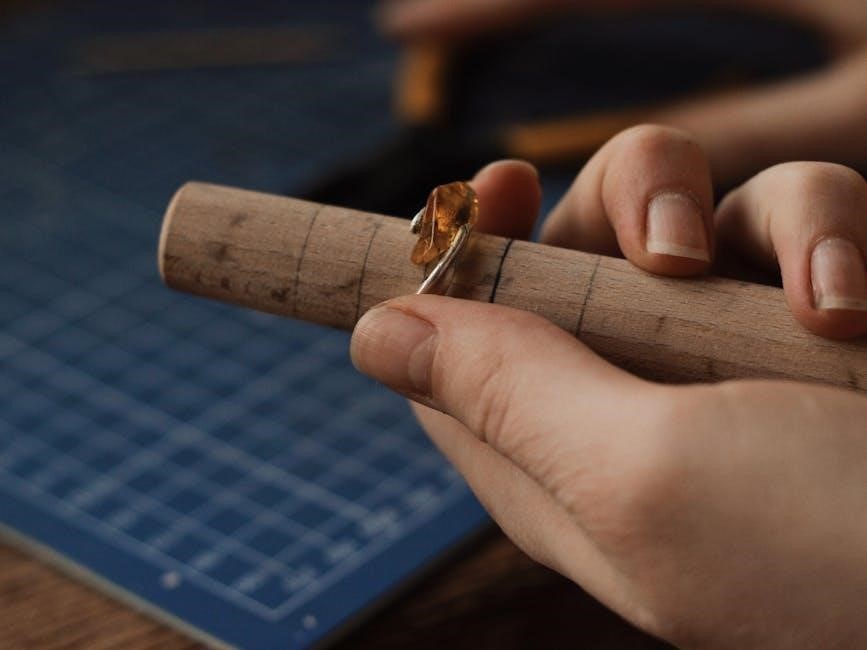Restoration Shamans bring unique versatility to PvP, blending healing, utility, and damage capabilities. Their totems and abilities enhance team support, making them invaluable in dynamic battlegrounds and arenas.
1.1 What is a Resto Shaman?
A Restoration Shaman is a healer who specializes in restoring health and supporting allies through the power of elemental forces. Using abilities like Healing Wave, Lesser Healing Wave, and Riptide, they provide consistent and emergency healing. Their totems, such as Mana Tide Totem and Healing Stream Totem, further enhance their team’s performance. Resto Shamans also bring unique utility, including crowd control and mobility tools, making them versatile in PvP. Their ability to adapt to dynamic situations and sustain mana efficiently makes them a valuable asset in battlegrounds and arenas.
1.2 Why Play a Resto Shaman in PvP?
Resto Shamans excel in PvP due to their exceptional healing output, mobility, and versatility. Their totems provide valuable buffs, and abilities like Earth Shield and Healing Stream Totem enhance team survivability. Additionally, their ability to adapt to various scenarios and support allies with cooldowns makes them highly sought after in competitive play. The unique combination of healing and utility ensures Resto Shamans are a formidable force in any PvP setting, offering both consistency and impact in dynamic battlegrounds and arenas.
1.3 Basic PvP Concepts for Beginners
Understanding basic PvP concepts is crucial for success. Learn to manage your cooldowns effectively, positioning yourself to maximize healing while avoiding enemy focus. Develop situational awareness to anticipate enemy movements and actions. Mastering crowd control and interrupts can significantly impact team dynamics; Communicate with allies to coordinate strategies and respond to threats. Practice kiting to maintain distance from melee attackers while sustaining healing output. Familiarize yourself with key abilities and weaknesses of opposing classes to adapt your playstyle. These fundamentals will build a strong foundation for competitive PvP as a Resto Shaman.
Race and Class Benefits
Race and class benefits significantly enhance a Resto Shaman’s PvP effectiveness. Certain races offer abilities that complement healing and survival, while class traits like totems boost team utility.
2.1 Choosing the Right Race for PvP
Selecting the right race for your Resto Shaman in PvP can significantly impact your gameplay. For Horde players, Orcs are a popular choice due to Blood Fury, which increases attack power and healing. Tauren, with their War Stomp, provide excellent crowd control and survivability. Pandaren offer Epicure, enhancing resource regeneration. On the Alliance side, Humans gain Every Man for Himself, a powerful PvP trinket-like ability, while Gnomes benefit from Escape Artist for improved mobility. Draenei’s Gift of the Naaru provides a healing bonus. Each race offers unique benefits, so choose based on your playstyle and faction needs.
2.2 Key Class Abilities for PvP
Restoration Shamans excel in PvP with abilities like Earth Shield, which provides consistent healing, and Riptide, offering instant spot healing. Healing Wave serves as a reliable, high-output heal, while Earthgrab Totem and Tremor Totem provide crucial crowd control and interruption resistance. Ghost Wolf enhances mobility, allowing quick positioning, and Purify Spirit removes harmful effects, protecting allies. These abilities make Resto Shamans versatile and resilient in dynamic PvP scenarios, enabling effective team support and survival.
Talent Builds for PvP
Opt for talents like Earth Shield, Riptide, and Ancestral Vigor to enhance healing output and survivability in dynamic PvP scenarios, ensuring consistent support for your team.
3.1 General PvP Talent Build
A well-rounded PvP talent build for Resto Shaman focuses on survivability, mobility, and consistent healing output. Key talents include Earth Shield for reliable single-target healing, Riptide to provide instant healing and HoT, and Water Shield for mana regeneration. Nature’s Guardian enhances survivability by reducing damage taken, while Ancestral Vigor boosts raid-wide healing. Purification is crucial to reduce dispel resistance, ensuring your heals stay effective. This build balances offensive and defensive capabilities, making it adaptable to various PvP scenarios while maintaining strong healing output and utility for your team.
3.2 Talent Choices for Specific Scenarios
In PvP, adaptability is key, and talent choices must align with the situation. For battlegrounds, focus on mobility and group healing with Earthgrab Totem and Healing Tide Totem. In arenas, prioritize single-target healing with Clarity of Thought or Unleash Life for burst damage mitigation. Against melee-heavy teams, Stone Shield Totem reduces physical damage, while Grounding Totem counters spellcaster-focused lineups. Always adjust talents based on the enemy team’s composition and your role in the group, ensuring maximum utility and survivability in dynamic scenarios.

Glyphs and Enhancements
Glyphs like Glyph of Totemic Recall and Glyph of Riptide enhance Shaman utility in PvP, improving totem management and healing efficiency. Enhancement glyphs further boost spell effectiveness.
4.1 Major Glyphs for PvP
Major glyphs significantly enhance key abilities for PvP. Glyph of Totemic Recall allows instant recall of totems, saving time in intense battles. Glyph of Healing Stream Totem boosts its healing output, making it more effective in sustained fights. Glyph of Earth Shield increases its damage absorption, providing stronger tank healing. Glyph of Riptide enhances its initial healing surge, benefiting burst healing situations. These glyphs are essential for maximizing your healing impact and utility in competitive scenarios, ensuring your Restoration Shaman performs optimally in dynamic PvP environments.
4.2 Minor Glyphs for PvP
Minor glyphs enhance utility and convenience in PvP, offering subtle but impactful benefits. Glyph of Water Walking allows movement on water without losing Ghost Wolf, improving map control. Glyph of the Treant transforms the Shaman into a treant, reducing damage taken while casting Rejuvenation. Glyph of the Mounted Skull increases the range of Locate Skull, helping track enemies. These glyphs don’t directly boost healing but enhance mobility and situational awareness, making them valuable for competitive play. Choose glyphs that align with your playstyle and the demands of specific battlegrounds or arenas to maximize your versatility and effectiveness in dynamic PvP scenarios.
4.3 Enhancements for PvP Performance
Enhancements play a vital role in optimizing a PvP Resto Shaman’s effectiveness. Gem choices should focus on resilience and spell power to enhance survivability and healing output.
Enchants like “Enchant Chest ౼ Major Resilience” and “Enchant Boots ‒ Earthen Vitality” are ideal for bolstering defensive stats.
Additionally, trinkets with on-use effects providing spell power or healing boosts can significantly impact performance.
Weapon enchants such as “Enchant Weapon ౼ Major Healing” further amplify healing capabilities.
Adapting enhancements based on specific matchups ensures maximum efficiency in dynamic PvP environments.

Stats and Gear
Focus on Mastery and Versatility for enhanced healing and survivability. Prioritize gear with these stats, and utilize enchants and gems to maximize effectiveness in PvP scenarios.
5.1 Stat Prioritization for PvP
In PvP, Restoration Shamans should prioritize resilience to reduce incoming damage, followed by spell power to enhance healing effectiveness. A strong mana pool and regeneration are crucial for sustained healing, while haste improves spell casting speed. Critical strike chance can amplify healing bursts, making it a valuable secondary stat. Balancing these stats ensures optimal performance in dynamic PvP scenarios, allowing for both survivability and impactful healing. Proper stat allocation is key to excelling as a Resto Shaman in competitive environments.
5.2 Gear Recommendations for PvP
For PvP, focus on gear with high Intellect, Stamina, and Spirit to maximize mana pool and regeneration. Prioritize items with PvP-specific stats like Resilience and PvP Power. Heirlooms and crafted gear are excellent starting points, as they provide consistent performance. Aim for a balanced set with versatility across different slots. Consider PvP vendor gear for budget-friendly, high-performance pieces. Always ensure your gear is enchanted and gemmed appropriately for PvP, emphasizing mana efficiency and survivability. Proper gear enhances your ability to heal and support your team effectively in intense battleground and arena scenarios.
5.3 Enchants and Gems for PvP
Optimizing your gear with the right enchants and gems is crucial for PvP success. Focus on enchants that enhance mana efficiency and spell power, such as Enchant Boots ౼ Tuskarr’s Vitality for movement speed and Enchant Gloves ౼ Exceptional Spellpower for increased healing. For gems, prioritize Runed Cardinal Ruby for spell power and Focus of the Resto Druid for crit. Glowing Dreadstone is ideal for addressing mana concerns. Always consider socket bonuses to maximize efficiency, ensuring your gear supports your playstyle and mana management in high-pressure PvP scenarios.

Gameplay Mechanics
Mastering healing, utility, and damage, Resto Shamans balance Lightning Bolt for offense, Earth Shield for protection, and totems like Grounding Totem for defensive counters in dynamic combat.
6.1 Key Spells for PvP
In PvP, Restoration Shamans rely on spells like Healing Surge for quick, high-value heals and Riptide for preemptive healing. Earth Shield provides consistent damage reduction, while Lightning Shield generates mana. Purify Spirit removes harmful debuffs, and Cleanse Spirit dispels curses. Grounding Totem reflects harmful spells, and Thunderstorm knocks enemies back while draining their mana. Tremor Totem prevents fear effects, and Healing Tide Totem offers burst healing in intense fights. These spells form the core of a Resto Shaman’s toolkit, enabling adaptability and resilience in dynamic PvP scenarios.
6.2 Totems in PvP
Totems are a cornerstone of a Resto Shaman’s toolkit in PvP, providing utility and control. Earth Shield Totem absorbs damage, while Water Shield Totem restores mana. Fire Elemental Totem deals damage and taunts enemies, disrupting attackers. Air Totem enhances spellcasting speed, and Grounding Totem deflects harmful spells. Strategic placement and timing of totems can turn the tide of battle, such as using Tremor Totem to break fears or Windfury Totem for melee burst. Always adapt to the situation, ensuring totems are refreshed and positioned to maximize their impact without being easily destroyed by opponents.
6.3 Managing Cooldowns
Managing cooldowns is crucial for Resto Shamans in PvP, as it ensures consistent healing and utility. Abilities like Earth Shield and Healing Stream Totem should be used proactively to sustain allies. Coordinate Mana Tide Totem with your team to maximize mana regeneration during intense fights. Ghost Wolf enhances mobility, allowing quick repositioning. Use Earth Elemental Totem to control crowds and protect yourself. Timing Heroism or Bloodlust with your team’s offensive cooldowns can turn the tide of battle. Always prioritize cooldowns based on the situation to maintain healing output and adapt to enemy pressure effectively.
Playstyle and Strategies
Resto Shamans excel in PvP through adaptability and strategic positioning. Effective totem placement enhances team support, while mana conservation ensures sustained healing under pressure. Versatile and resilient.
7.1 Healing Strategies in PvP
In PvP, Restoration Shamans must prioritize quick decision-making to keep allies alive. Focus on preemptive healing with Riptide and Healing Stream Totem to prepare for incoming damage. Use Mana Spring Totem to sustain mana for both you and your team. Always keep Earth Shield on your primary healer or most targeted ally. Balance reactive healing with proactive plays, such as using Healing Wave for burst damage and Lesser Healing Wave for minor injuries. Kite enemies when necessary and stay mobile to avoid being targeted. Avoid tunnel vision on a single target—adapt to the battlefield and prioritize team survival above all.
7.2 Kiting and Positioning
Kiting and positioning are crucial for Resto Shamans in PvP, allowing you to stay out of harm’s reach while maintaining healing output. Keep moving to avoid melee attackers, using Ghost Wolf to stay mobile. Position yourself near allies but avoid clustering, making it harder for enemies to focus you. Always face your attackers to prevent being kited yourself. In battlegrounds, stay near high ground or obstacles to limit enemy movement. Mastering these techniques ensures you remain a consistent healer while evading threats effectively.
7.3 Managing Mana in PvP
Mana management is crucial for Resto Shamans in PvP, as consistent healing is vital. Use Water Shield to regenerate mana and Mana Spring Totem to support your team. Prioritize efficient spells like Healing Wave and Lesser Healing Wave to avoid overhealing. Earth Shield reduces mana waste by preventing unnecessary heals. During intense fights, kite enemies to create distance, allowing you to regenerate mana. Use offensive spells like Lightning Bolt sparingly to secure kills without draining your resources. Adapt your mana usage based on the match’s pace and your team’s needs to maintain longevity in battles.

Battleground and Arena Play
Resto Shamans excel in both battlegrounds and arenas, providing consistent healing and utility. Their totems and abilities enhance team synergy, making them adaptable to various PvP scenarios.
8.1 Battleground Strategies
In battlegrounds, Resto Shamans excel by focusing on strategic positioning and proactive healing. Always stay near high-traffic areas to maximize your totem coverage and healing output. Use Healing Stream Totem and Earthshield Totem to bolster your team’s resilience. Position yourself to avoid enemy focus while maintaining mana efficiency. Utilize Mana Tide Totem during intense fights to sustain your healing. Kite effectively by keeping a safe distance from melee attackers and focus on healing teammates engaged in combat. Adapt your strategies based on the battleground map and objective, ensuring you prioritize healing key targets to secure victories.
8.2 Arena Play and Team Composition
Restoration Shamans excel in Arena play due to their adaptability and ability to support various team compositions. They thrive in setups like Mage/Shaman/Healer or Melee cleave teams, providing consistent healing and utility. Their totems and spells enhance team synergy, while abilities like Earth Shield and Healing Stream Totem boost survivability. Effective communication and coordination with teammates are crucial, as Resto Shamans can adapt to counter enemy strategies. Their versatility makes them a valuable asset in any Arena composition, allowing them to counter diverse playstyles and ensure team dominance in competitive PvP scenarios.
8.3 Common PvP Scenarios
In PvP, Resto Shamans often face diverse scenarios, from 1v1 duels to large-scale battlegrounds. In 1v1 situations, focus on kiting and using Earth Shield to mitigate damage while wearing opponents down with Lightning Bolt. In group fights, prioritize healing allies with Healing Wave and Chain Heal, while using Purge to remove enemy buffs. In battlegrounds like Warsong Gulch or Arathi Basin, securing objectives while maintaining healing pressure is crucial. Adaptability and quick decision-making are key, as scenarios can shift rapidly. Use totems and cooldowns like Healing Tide Totem to stabilize your team in intense moments. Versatility is your strength in dynamic PvP environments.

Countering Enemy Classes
Resto Shamans excel at countering melee with Earth Shield and Thunderstorm, while casters are controlled via spell interrupts and Grounding Totem. Ranged classes are managed through kiting and Purge.
9.1 Countering Melee Classes
Against melee classes, focus on using Earth Shield to reduce incoming damage and trigger healing. Utilize Grounding Totem to reflect harmful spells like stuns or roots. Keep Purification and Healing Stream Totems active for enhanced resilience. Kite aggressively, using mobility and spells like Stoneclaw Totem to control distance. Keep Earthliving Weapon on your main healer target and use Cleanse Spirit to remove debilitating debuffs. Stay vigilant for burst damage and always position yourself to avoid being trapped. Grounding Totem can also interrupt critical melee cooldowns, giving your team a strategic advantage in combat.
9.2 Countering Caster Classes
Against caster classes, focus on disrupting their spellcasting. Use Wind Shear and Earth Shock to interrupt critical spells. Deploy Grounding Totem to absorb incoming casts. Purge enemy buffs with Purify Spirit to weaken their effectiveness. Shaman’s mobility allows kiting casters, preventing them from landing direct damage. Use defensive totems like Earth Shield Totem to reduce magical damage. Manage your mana efficiently, as casters often target healers. Shield yourself with Lightning Shield when focusing on healing. Use cooldowns like Mana Tide Totem to sustain under pressure. These strategies maximize your utility and survivability against caster-heavy teams.
9.3 Countering Ranged Classes
Against ranged classes like Mages or Hunters, use Earth Shield to absorb incoming damage and Grounding Totem to intercept spells. Spirit Wolf enhances mobility, allowing you to close gaps or escape. Use Far Sight to reveal hidden enemies and disrupt their positioning. Shamans can also rely on offensive tools like Hex or Lightning Bolt to pressure ranged opponents, forcing them to defend. Totems like Tremor Totem can nullify feared or slept targets, while Earthliving Weapon bolsters your healing during prolonged fights. Adaptability and proactive totem placement are key to neutralizing ranged threats effectively in PvP scenarios.

Advanced Techniques
Master advanced cooldown chaining, psychological tactics to mislead opponents, and adaptability to counter diverse playstyles, ensuring dynamic and effective strategies in high-stakes PvP scenarios.
10.1 Advanced Cooldown Management
Mastering cooldown management is critical for PvP Resto Shamans. Abilities like Earth Shield and Spirit Link Totem should be used at pivotal moments to maximize healing and survivability. Coordinate Healing Tide Totem with team ultimates for enhanced effectiveness. Preemptively cast Earthliving Weapon and Unleash Life to bolster healing during intense pressure. Manage Mana Tide Totem strategically to maintain mana efficiency in prolonged fights. Timing Stone Bulwark Totem and Grounding Totem can neutralize enemy cooldowns, turning the tide in your favor. Advanced players synchronize their cooldowns with teammates to create overwhelming healing bursts, ensuring consistent pressure and control in arenas and battlegrounds.
10.2 Psychological Warfare in PvP
Psychological warfare in PvP involves using your abilities and presence to unsettle opponents. As a Resto Shaman, you can exploit spells like Hex or Earth Shock to disrupt enemy rhythm, creating doubt and hesitation. Using totems strategically can also force opponents to react, wasting their cooldowns. Misdirection through fake casting or baiting enemies into unfavorable positions can lead to mistakes. Building a reputation as an unpredictable healer can pressure enemies to overcommit, giving your team an edge. Mastering these tactics enhances your impact beyond direct healing, making you a formidable opponent in both mind and action.
10.3 Adapting to Different Playstyles
Adapting to different playstyles is crucial for success as a PvP Resto Shaman. Flexibility in your strategy allows you to counter various opponents effectively. Whether facing aggressive melee or ranged classes, adjust your positioning and healing priorities. Use totems like Earthbind Totem to control movement or Healing Stream Totem to sustain allies. Against burst damage, focus on preemptive healing with Riptide and Healing Wave. For sustained pressure, manage mana efficiently and use Mana Tide Totem; Tailor your talent choices to the scenario, such as enhancing mobility or survivability. Continuous observation and quick decision-making are key to outplaying opponents.
Addons and Macros
11.1 Essential Addons for PvP
HealBot and Grid are crucial for tracking healing needs. Deadlys Boss Mods aids in managing cooldowns, while macros streamline abilities like Earth Shield and Riptide.
Essential addons for PvP Resto Shaman enhance gameplay by improving decision-making and reaction time. HealBot and VuhDo provide intuitive healing interfaces, while Deadly Boss Mods offers cooldown tracking. Grid or Grid2 simplifies raid frame management. OmniCC adds cooldown timers, and Threat Plates highlights enemy threats. Bartender customizes action bars, and WeakAuras creates custom alerts for abilities. These tools streamline gameplay, allowing focus on strategic healing and utility. They are indispensable for optimizing performance in fast-paced PvP environments.
11.2 Useful Macros for PvP
Macros can enhance a Resto Shaman’s PvP efficiency. For example, a healing macro combining Healing Wave and Earth Shield streamlines tank healing. Another macro links Riptide with Chain Heal for area-of-effect healing. A Purify Spirit macro simplifies debuff removal, while a Spiritwalker’s Grace macro allows casting while moving. Additionally, a Wind Shear interrupt macro with a focus target ensures quick spell disruption. A Grounding Totem macro absorbs harmful spells, and a Lightning Bolt macro with a modifier key enables easy damage dealing. These macros optimize ability usage, improving responsiveness and adaptability in fast-paced PvP scenarios.
Mastering PvP as a Resto Shaman requires adaptability, continuous learning, and practice. Embrace challenges, refine strategies, and enjoy the rewarding journey of improving your gameplay.
12.1 Final Thoughts on PvP Resto Shaman
Mastering a PvP Resto Shaman requires adaptability, quick thinking, and a deep understanding of your abilities. Your role as a healer is crucial, but your damage and utility can turn the tide of battle. Always stay aware of your surroundings and communicate with your team. Continuous learning and practice will refine your skills, making you a formidable opponent. Embrace the challenges and enjoy the rewarding experience of playing a class that blends healing, utility, and damage seamlessly. With dedication, you’ll become an indispensable asset to any PvP team.
12.2 Continuous Learning and Improvement
Continuous learning is crucial for excelling as a PvP Resto Shaman. Analyze your gameplay, identify mistakes, and adapt strategies. Stay updated on class changes, meta shifts, and high-level techniques. Watch replays of skilled players to gain insights and refine your decision-making. Regularly practice in arenas and battlegrounds to hone your reflexes and situational awareness. Learning from both successes and failures ensures steady improvement. Engage with the community through forums, streams, and guides to stay informed and inspired. Consistent effort and a willingness to evolve will elevate your performance and keep you competitive in dynamic PvP environments.


















































